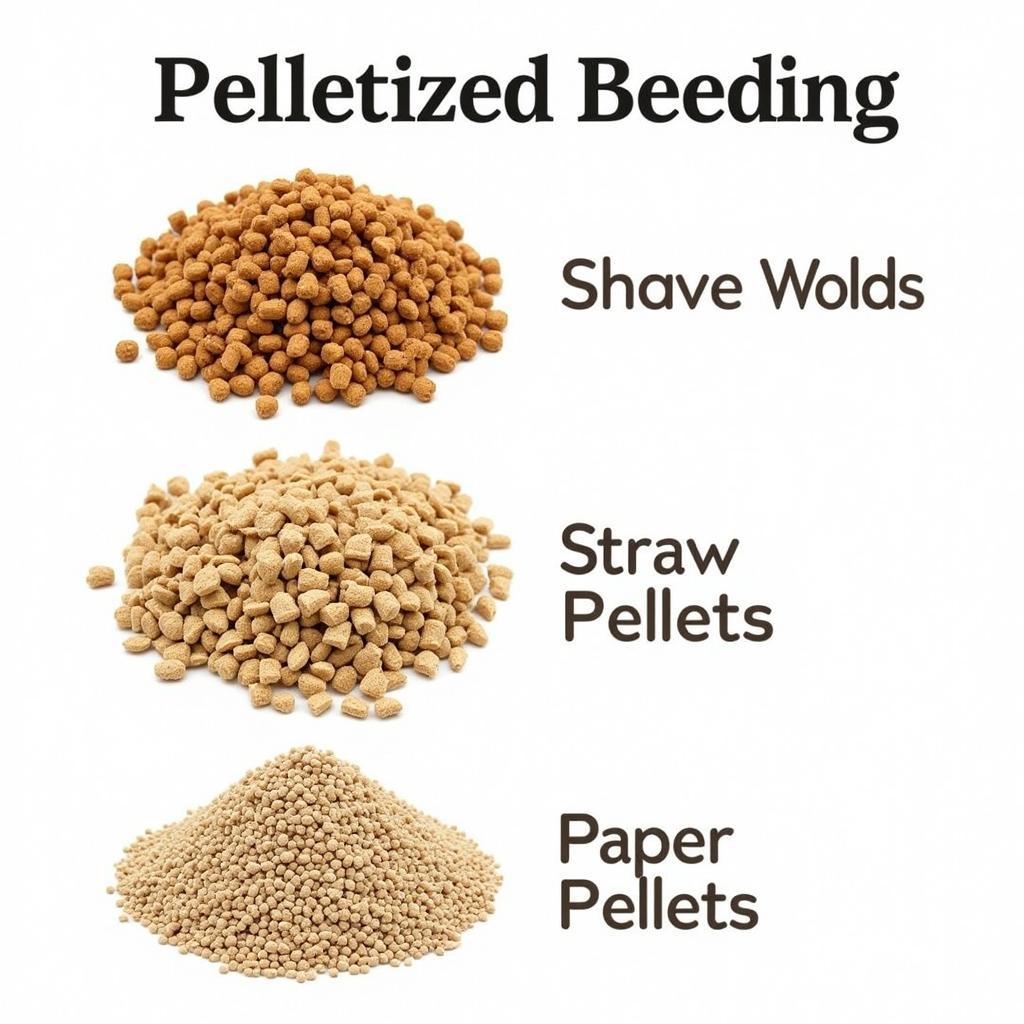Pelletized Bedding For Horses is becoming an increasingly popular choice for horse owners seeking a low-dust, absorbent, and easy-to-manage bedding option. This guide will delve into the advantages and disadvantages of pelletized bedding, helping you determine if it’s the right choice for your equine companion.
Understanding Pelletized Horse Bedding
Pelletized bedding is typically made from wood, straw, or paper byproducts, compressed into small, uniform pellets. These pellets expand when wet, creating a soft and absorbent bed for your horse. Different materials offer varying levels of absorbency, dust control, and ease of disposal.
Types of Pelletized Bedding
- Wood Pellets: Often made from softwood or hardwood shavings, wood pellets are known for their excellent absorbency and low dust levels. They are also relatively economical.
- Straw Pellets: Straw pellets offer good absorbency and are biodegradable. They can be a good choice for horses with respiratory sensitivities.
- Paper Pellets: Made from recycled paper, these pellets are highly absorbent and break down easily, simplifying manure management.
 Types of Pelletized Bedding for Horses
Types of Pelletized Bedding for Horses
Advantages of Using Pelletized Bedding
Pelletized bedding offers numerous benefits for both horses and their owners:
- Superior Absorbency: Pellets absorb urine and moisture effectively, keeping the stall drier and reducing ammonia buildup.
- Dust Reduction: The compact nature of pellets minimizes dust, benefiting horses prone to respiratory issues.
- Easy to Store and Manage: Pelletized bedding comes in compact bags, simplifying storage and transport. It’s also easier to muck out than traditional bedding.
- Economical: While the initial cost might seem higher, the reduced volume needed and less frequent mucking can lead to long-term savings.
- Biodegradable and Environmentally Friendly: Many pelletized bedding options are biodegradable, making them a sustainable choice.
Disadvantages of Pelletized Bedding
While pelletized bedding offers numerous advantages, it’s crucial to consider potential drawbacks:
- Initial Cost: The upfront cost of pelletized bedding can be higher than traditional options like shavings.
- Potential for Mold Growth: If the bedding isn’t managed properly, it can become damp and prone to mold. Regular mucking is essential.
- Not Suitable for All Horses: Some horses may find the texture of pelletized bedding unfamiliar and may initially be hesitant to lie down.
- Availability: Depending on your location, sourcing specific types of pelletized bedding might be challenging.
Is Pelletized Bedding Right for Your Horse?
Choosing the right bedding depends on various factors, including your horse’s individual needs, your budget, and your management practices.
“Consider your horse’s respiratory health,” advises Dr. Emily Carter, DVM, of Equine Wellness Center. “If your horse has allergies or respiratory sensitivities, pelletized bedding can significantly improve their comfort.”
Managing Pelletized Bedding Effectively
Proper management is key to maximizing the benefits of pelletized bedding. Regularly remove wet spots and droppings, and add fresh bedding as needed. Ensure proper ventilation in the stall to prevent moisture buildup.
“Maintaining a consistent bedding depth is crucial,” adds stable manager John Davis. “A good starting point is a 4-6 inch base of pellets.”
Conclusion
Pelletized bedding for horses offers a practical and often beneficial alternative to traditional bedding options. By understanding the various types available, weighing the pros and cons, and implementing proper management practices, you can create a comfortable and healthy stall environment for your equine companion. Remember to consider your horse’s individual needs and consult with a veterinarian or equine professional if you have any concerns.
FAQs
- How often should I clean a stall with pelletized bedding?
- What is the average cost of pelletized bedding?
- Can I mix pelletized bedding with other types of bedding?
- Is pelletized bedding suitable for horses with allergies?
- Where can I purchase pelletized bedding?
- How much pelletized bedding do I need for a standard stall?
- What are the different types of wood pellets available?
Need further assistance? Contact us at Phone Number: 0772127271, Email: [email protected] or visit us at QGM2+WX2, Vị Trung, Vị Thuỷ, Hậu Giang, Việt Nam. We have a 24/7 customer service team.